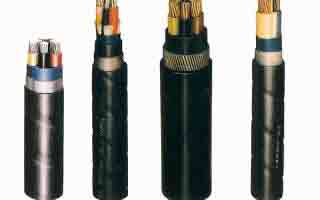
Most of the wire and cable products are products with the same cross-section (cross-section) shape (ignoring manufacturing-related errors) and long strips, which are used as features in the system or equipment to form lines or coils. Determined. Therefore, research and analysis of the structural composition of cable products, only need to observe and analyze from its cross section.
The structural components of wire and cable products can be divided into four main structural components: wire, insulation layer, shielding and sheathing layer, as well as filling components and tensile components. Depending on the product's requirements and application, some product structures are extremely simple.
(1) Wires Wires are the most essential and essential components of the product for current or electromagnetic wave information transmission. The wire is an abbreviation of the conductive wire core, and is made of non-ferrous metal with excellent electrical conductivity such as copper, aluminum, copper clad steel, copper clad aluminum, and the optical fiber is used as the wire.
(2) Insulation is a member that is electrically insulated around the periphery of the wire. That is, it can ensure that the transmitted current or electromagnetic wave and light wave travel only along the wire without flowing to the outside, and the potential (ie, the potential difference formed by the surrounding object, that is, the voltage) on the conductor can be isolated, that is, the normal transmission of the wire must be ensured. Function, but also to ensure the safety of external objects and people.
Wires and insulation are the two basic components that must be available to form a cable product (except for bare wires).
(3) Shielding is a component that isolates the electromagnetic field in a cable product from the external electromagnetic field; the cable product also needs to be isolated from each other between its different pairs (or groups). It can be said that the shielding layer is an "electromagnetic isolation screen". The conductor shield and the insulation shield of the high voltage cable are used to homogenize the distribution of the electric field.
(4) Jacket layer When the wire and cable product is installed and operated in various environments, it must have a member that protects the whole product, especially the insulating layer. This is the sheath layer.
Because insulation materials are required to have excellent electrical insulation properties, the purity of the materials must be extremely high, and the impurity content is extremely small; often, the ability to protect the outside world cannot be taken into consideration, so the external environment (ie, installation, use, and use) The tolerance or resistance of various mechanical forces, the resistance to the atmosphere, the resistance to chemicals or oils, the prevention of biological damage, and the reduction of fire hazards must be borne by various sheath layers.
(5) Filling structure Many wire and cable products are multi-core. After these insulated cores or pairs are cabled (or grouped into multiple cables), the shape is not round, and the insulation core is very Large gaps, so it is necessary to add a filling structure when the cable is formed. The filling structure is to make the outer diameter of the cable relatively round to facilitate the wrapping and squeezing of the sheath.
6) Tensile elements. Typical structures are steel core aluminum stranded wires, fiber optic cable cables, and the like. In short, the tensile element plays a major role in products that have been developed in recent years and that are particularly small and flexible, and that require multiple bends and twists.